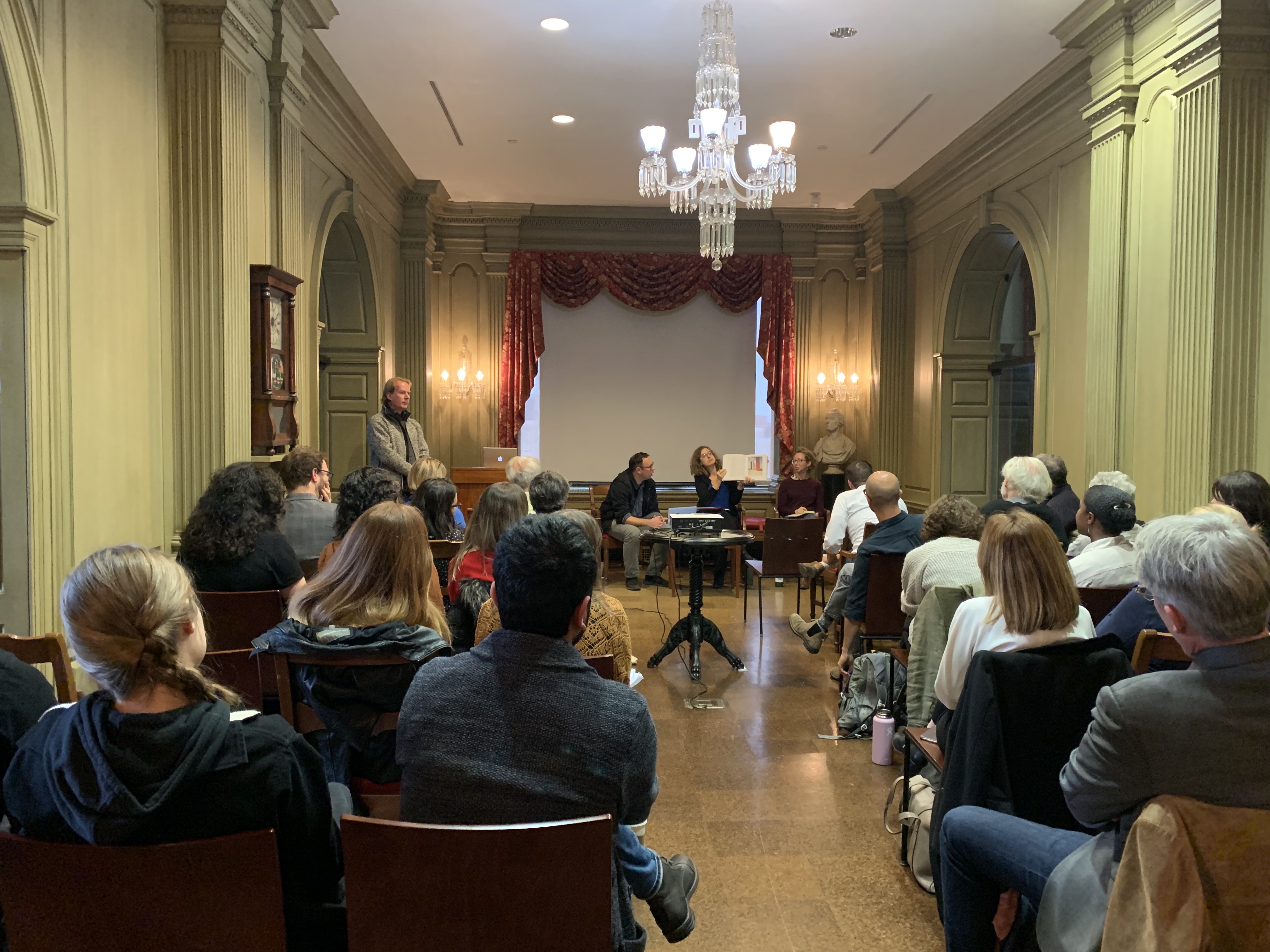Author: Rebecca Giordano
PhD Student in History of Art and Architecture
On October 25th, Pitt’s Humanities Center hosted a collective book launch for three scholars whose work draws out transnational networks of creative practice. Bridging three disciplines, multiple media, and several different decades, the authors each spoke about their book projects with nods to each other’s work followed by a generous and lively Q&A. HAA associate professor Jennifer Josten presented her book Mathias Goeritz: Modernist Art and Architecture in Cold War Mexico alongside Pitt Department of Communication assistant professor Caitlin Bruce who shared her book Painting Publics: Transnational Legal Graffiti Scenes as Spaces for Encounter. Chronicling different decades and locations, each presented Mexican artistic production as sites within hemispheric and transnational networks from distinct methodologies and disciplinary vantages. Harris Feinsod, now an associate professor of English at Northwestern, discussed The Poetry of the Americas: From Good Neighbors to Countercultures, a supranational history of poetry and politics he worked on while an Early Career Specialist at the Humanities Center (2015-2016).
Throughout the talk, the authors referenced the conversations they shared while developing their projects at Pitt. From the discipline-specific approaches to translation to the art historical methodologies designed to give principle weight to the art object, each voiced what they borrowed and what they shared. Hearing how such cross-disciplinary conversations advanced their projects shed light on the importance of interdisciplinary collaboration and the spaces which host it. During her presentation, Josten gave a close reading of all three book covers which each have artworks made in Mexico, noting that Feinsod’s book featured a work by Mathais Goertiz, the subject of her book. Feinsod and Josten both focus on the movement of ideas and people within geopolitical realities that defined Cold War cultural production. Bruce’s work brings these concerns into the present while capturing the personal and living nature of such networks through observation and interviews.
During the Q&A, Feinsod recounted to the audience that revered Mexican writer Octavio Paz had once graced the Cathedral of Learning for a year in 1969 during his exile in protest of the Mexican government’s actions in the 1968 Tlatelolco Massacre. Feinsod read from a letter Paz wrote during his time in Pittsburgh, which Feinsod translated into English. Paz’s witty and sharp letter is filled with funny barbs about the Cathedral’s “purest Gothic brick and cement” and quips about industrialist Andrew Mellon and poet Robert Bly. A pitch-perfect capstone to the event, the letter illustrated Pitt’s long history as a hub of hemispheric thinking, marked by intelligent criticism, a commitment to broad inquiry, and scholarly humor.

